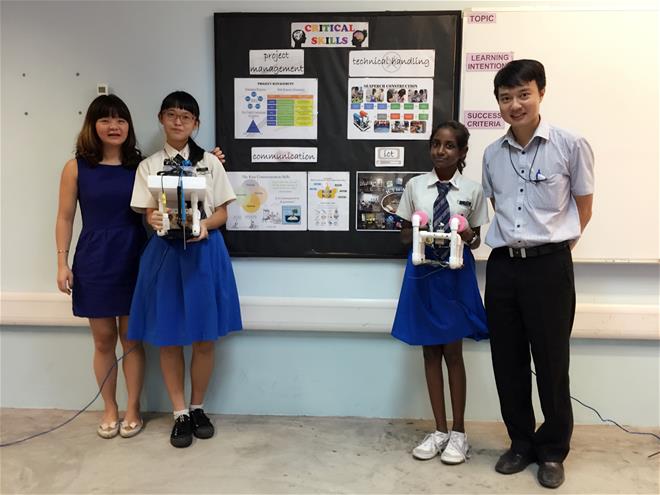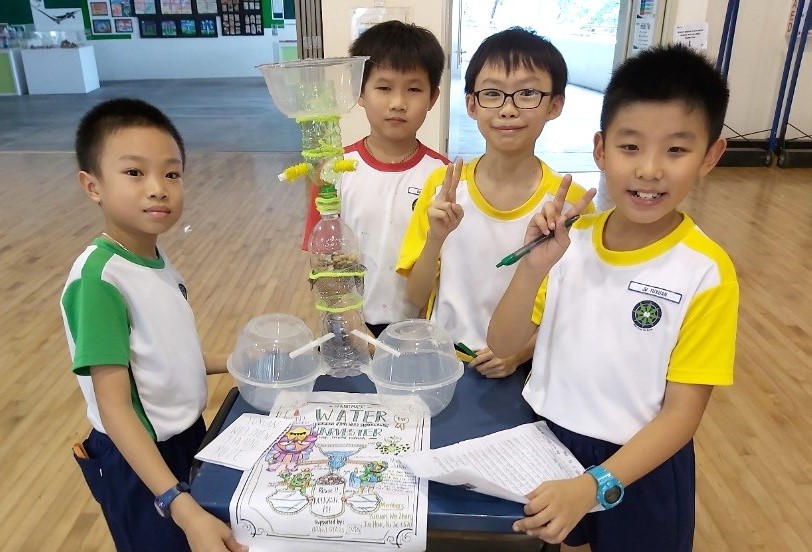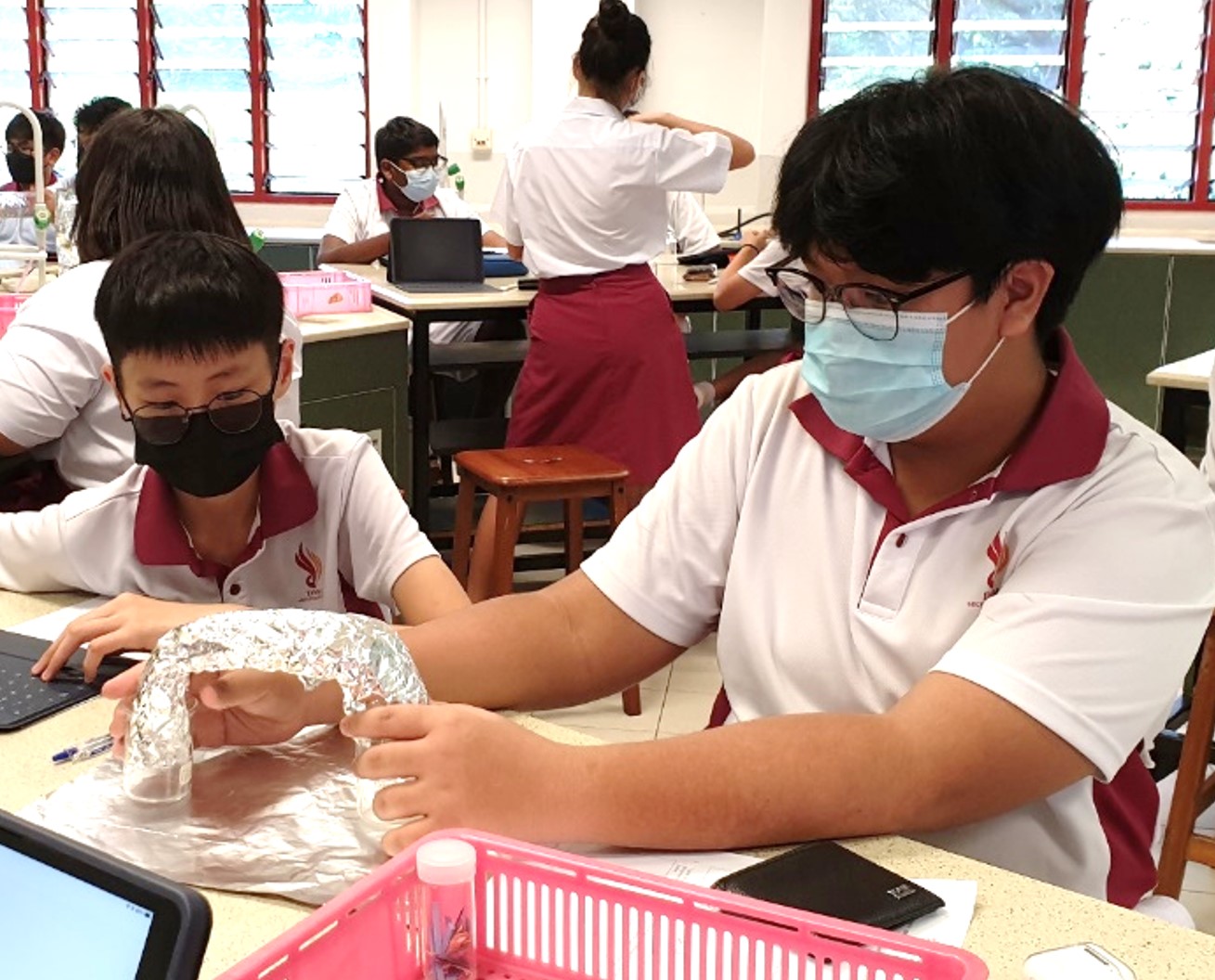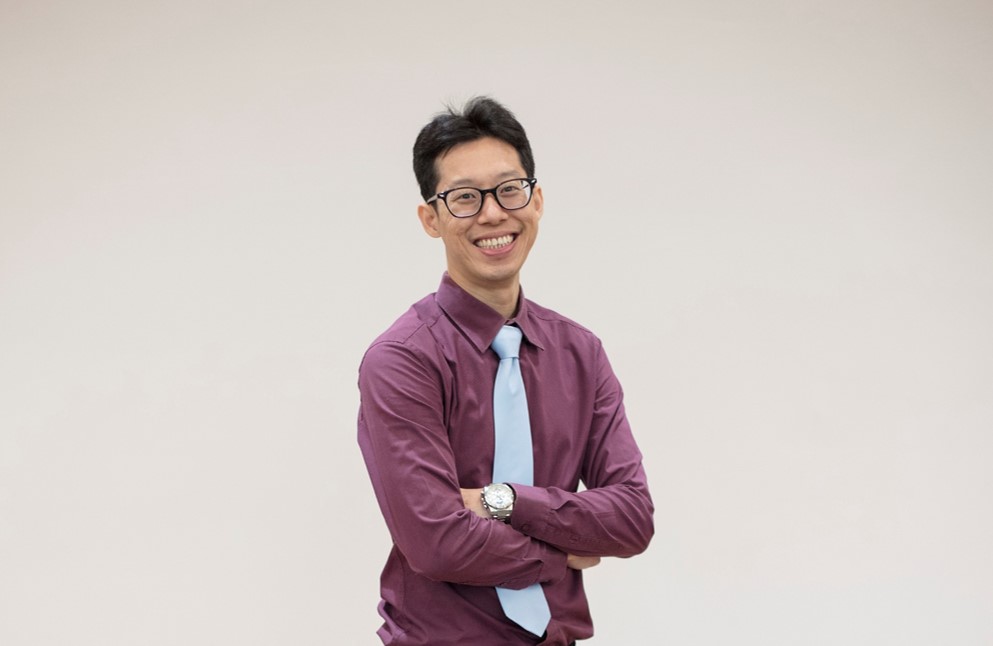Diving Deep into Underwater Robotics
20 Nov 2016

Students at Regent Secondary are getting their feet wet building underwater robots and learning more about marine engineering.
Remotely Operated Vehicles (ROVs) are underwater gadgets often used in deep sea explorations. You don’t expect them to be put together by 13-year-olds. But that’s exactly what students at Regent Secondary are doing in their Applied Learning Programme (ALP) class.
The school’s ALP is Robotics and Engineering. One of the activities students do is build an underwater robot called Sea Perch, which is slightly bigger than a handheld camcorder. Each group of four is given a starter kit – with motors, PVC pipes for the structure, controller box etc – and they have to put one together over three months, spending one hour each week during their ALP lesson to work on it.
Sherrinshah d/o Riduanshah, now in Secondary 2, was excited when she first embarked on the project in Secondary 1. “I like hands-on activities and we got to do things like solder and wire up a circuit,” she says.
Sink or swim?
Initially, there were more misses than hits in building the Sea Perch. Students had to deal with structures that collapsed mid-way through the construction while a few fell apart as soon as they hit water.
Mr Vincent Ng, Subject Head of ALP and Design and Technology (D&T), who is a trained engineer, says, “One of the aims of the ALP is to get students to think critically and explore different ways to solve a problem.” Students apply concepts they learn in Science and D&T classes, such as buoyancy, hydrodynamic behaviour and structural design.
Sherrin’s classmate, Yeo Ying Jie’s Sea Perch floundered in the water when she conducted the test run. As Ying Jie realised, “The positions of the drain holes in the structure, which allow air to escape and keep it buoyant, are very important. My teammates and I thought we could drill our holes wherever we liked.” They consulted their teacher and observed what the successful groups did, eventually figuring out the correct positions to drill the holes.
At the end of 12 weeks, the school held a friendly competition among students to race their Sea Perches at the neighbourhood swimming pool. One of the challenges tested the agility of the Sea Perch in overcoming obstacles underwater, such as manoeuvring through a hula hoop.
Venturing into deeper waters
This year, the Secondary 2 students are taking their learning a step further and using their underwater robots to understand the environment. Their Sea Perches have evolved into Sense Perches, fitted with sensors to read the PH value and temperature of water. And their next challenge will be to use the Sense Perch to collect data on the water condition in a deep pond at Bukit Batok Nature Park.
Mr Ng says, “The ALP’s not about getting 100% of the students to like engineering but it’s about encouraging critical thinking.” Students also learn soft skills such as communication, teamwork and project management, which will benefit them in the future no matter which career they choose.
And just as Sherrin discovered a love of engineering, others have realised it is not for them. To these students, Mr Ng says, “‘Wonderful!’ I’d be upset if they took up engineering without really knowing what it is. I want them to start thinking what are the courses they like and the direction to take.”
For students who are interested in engineering, the school is developing more programmes to nurture their passion. The school is in talks with Ngee Ann Polytechnic, which has a Centre of Innovation in Environment and Water Technology, to offer short work attachments so that students get to learn from the researchers there.
Sherrin is toying with the idea of becoming an engineer in future. She says, “I like science even more now. It makes me wonder and ask questions.”
Who knows, but the Sea Perch may be the prelude to many exciting engineering projects for Sherrin in the future.

.jpg)
307a64a7a8a66eb2afccc900c73e6f2e.jpg)


